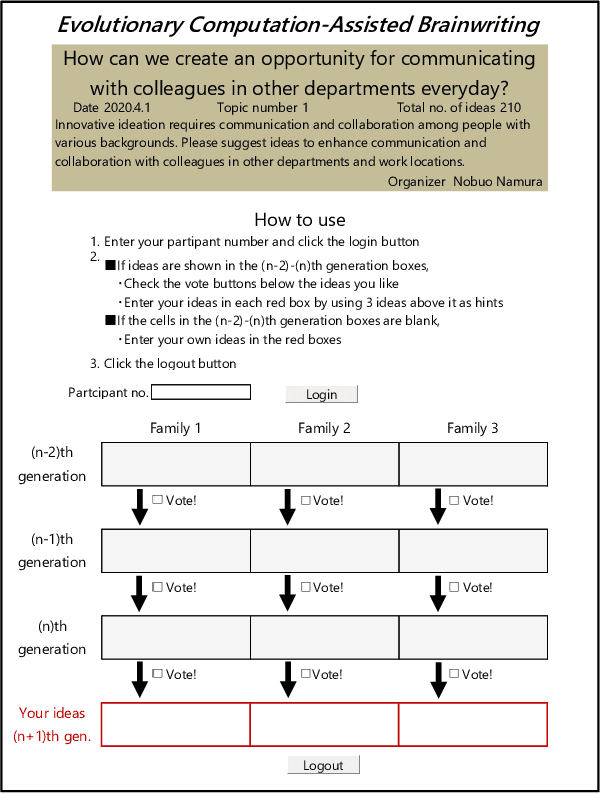Nobuo Namura
Regional Expected Improvement for Efficient Trust Region Selection in High-Dimensional Bayesian Optimization
Dec 16, 2024



Abstract:Real-world optimization problems often involve complex objective functions with costly evaluations. While Bayesian optimization (BO) with Gaussian processes is effective for these challenges, it suffers in high-dimensional spaces due to performance degradation from limited function evaluations. To overcome this, simplification techniques like dimensionality reduction have been employed, yet they often rely on assumptions about the problem characteristics, potentially underperforming when these assumptions do not hold. Trust-region-based methods, which avoid such assumptions, focus on local search but risk stagnation in local optima. In this study, we propose a novel acquisition function, regional expected improvement (REI), designed to enhance trust-region-based BO in medium to high-dimensional settings. REI identifies regions likely to contain the global optimum, improving performance without relying on specific problem characteristics. We provide a theoretical proof that REI effectively identifies optimal trust regions and empirically demonstrate that incorporating REI into trust-region-based BO outperforms conventional BO and other high-dimensional BO methods in medium to high-dimensional real-world problems.
Training-Free Time-Series Anomaly Detection: Leveraging Image Foundation Models
Aug 27, 2024



Abstract:Recent advancements in time-series anomaly detection have relied on deep learning models to handle the diverse behaviors of time-series data. However, these models often suffer from unstable training and require extensive hyperparameter tuning, leading to practical limitations. Although foundation models present a potential solution, their use in time series is limited. To overcome these issues, we propose an innovative image-based, training-free time-series anomaly detection (ITF-TAD) approach. ITF-TAD converts time-series data into images using wavelet transform and compresses them into a single representation, leveraging image foundation models for anomaly detection. This approach achieves high-performance anomaly detection without unstable neural network training or hyperparameter tuning. Furthermore, ITF-TAD identifies anomalies across different frequencies, providing users with a detailed visualization of anomalies and their corresponding frequencies. Comprehensive experiments on five benchmark datasets, including univariate and multivariate time series, demonstrate that ITF-TAD offers a practical and effective solution with performance exceeding or comparable to that of deep models.
Single and Multi-Objective Benchmark Problems Focusing on Human-Powered Aircraft Design
Dec 14, 2023Abstract:This paper introduces a novel set of benchmark problems aimed at advancing research in both single and multi-objective optimization, with a specific focus on the design of human-powered aircraft (HPA). These benchmark problems are unique in that they incorporate real-world design considerations such as fluid dynamics and material mechanics, providing a more realistic simulation of engineering design optimization. We propose three difficulty levels and a wing segmentation parameter in these problems, allowing for scalable complexity to suit various research needs. The problems are designed to be computationally reasonable, ensuring short evaluation times, while still capturing the moderate multimodality of engineering design problems. Our extensive experiments using popular evolutionary algorithms for multi-objective problems demonstrate that the proposed benchmarks effectively replicate the diverse Pareto front shapes observed in real-world problems, including convex, linear, concave, and degenerated forms. The benchmarks and their Python source codes are made publicly available for broader use in the optimization research community.
Surrogate-Assisted Reference Vector Adaptation to Various Pareto Front Shapes for Many-Objective Bayesian Optimization
Oct 10, 2021



Abstract:We propose a surrogate-assisted reference vector adaptation (SRVA) method to solve expensive multi- and many-objective optimization problems with various Pareto front shapes. SRVA is coupled with a multi-objective Bayesian optimization (MBO) algorithm using reference vectors for scalarization of objective functions. The Kriging surrogate models for MBO is used to estimate the Pareto front shape and generate adaptive reference vectors uniformly distributed on the estimated Pareto front. We combine SRVA with expected improvement of penalty-based boundary intersection as an infill criterion for MBO. The proposed algorithm is compared with two other MBO algorithms by applying them to benchmark problems with various Pareto front shapes. Experimental results show that the proposed algorithm outperforms the other two in the problems whose objective functions are reasonably approximated by the Kriging models. SRVA improves diversity of non-dominated solutions for these problems with continuous, discontinuous, and degenerated Pareto fronts. Besides, the proposed algorithm obtains much better solutions from early stages of optimization especially in many-objective problems.
* 8 pages, 4 figures, 4 tables
Evolutionary Computation-Assisted Brainwriting for Large-Scale Online Ideation
Oct 07, 2021



Abstract:Brainstorming is an effective technique for offline ideation although the number of participants able to join an ideation session and suggest ideas is limited. To increase the diversity and quality of the ideas suggested, many participants with various backgrounds should be able to join the session. We have devised an evolutionary computation-assisted brainwriting method for large-scale online ideation. In this method, participants not only suggest ideas but also evaluate ideas previously suggested by other participants. The evaluation results are used in the evolutionary computation to identify good ideas to which the participants can be exposed via a brainwriting-like interface. We compared the performance of the proposed method with that of a simple online brainwriting method for large-scale online ideation with more than 30 participants. The proposed method enhanced robustness of idea quality improvement due to preferentially exposing the participants to good ideas.
 Add to Chrome
Add to Chrome Add to Firefox
Add to Firefox Add to Edge
Add to Edge